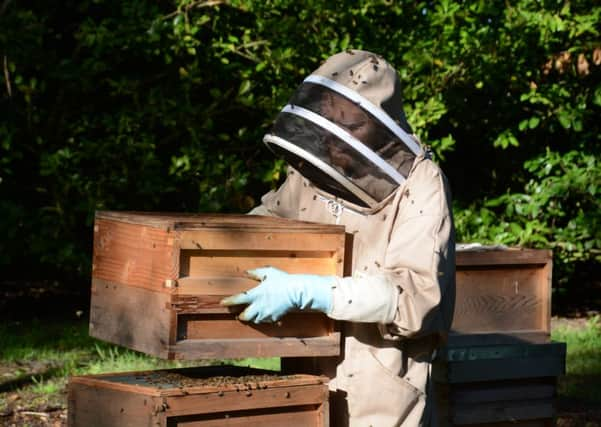You never stop learning from bees


As the bees become more active, I begin my weekly inspections. This includes checking that the queen is healthy and laying productively and has enough room to expand the colony. To do this I look at how quickly she’s laying her eggs. During the summer the worker bees move the honey from the brood chamber up to the ‘supers’ to allow the Queen more room to lay. I also check for signs of disease on the bees and on the brood. If there are signs of disease, such as Varroa, appropriate treatment is applied.
Varroa is a mite that lives on the host, in this case bees. They can be seen with the naked eye as a little brown spot on the back of the bees and can weaken and deform their wings in bad cases. To control the mite population bee keepers use a wide range of products and methods but you can never eradicate them completely. We tend to prefer a gel treatment strip placed inside the hive which the bees rub themselves against, before vigorously grooming themselves to rub off the treatment and hopefully the mites at the same time!
Advertisement
Hide AdAdvertisement
Hide AdDuring the summer months, determined by the timing of the flowering of surrounding flora, extraction of honey is in full flow. This is a fairly labour intensive task involving removing the supers from the colonies and cutting off the wax capping’s which are then put to one side. (A wax capping is a layer secreted by the bees which covers the honey until they are ready to use it, but is often used it in candle-making and health products). The frames are then put into an extractor where they are spun to release the honey which can take anything from hours to days. After this process it is left for 24 hours to allow air bubbles to escape, after which time it is poured into jars.
Bees are important, not only as a source of sweet nectar, but also for the pollination of all plants. According to the British Bee-keepers Association one third of the food that we consume each day relies on pollination by bees. I have been the bee keeper here at Wakehurst for 3 years and still learning lots about my bees and their behaviour. The thing I most enjoy about bee keeping is the way the colony works and coordinates everyday life in the bee hive. Every single bee has a vitally important role to play both inside the hive and out in the world.
Visit the pollinator garden at Wakehurst over the summer and see the wide array of stunning flowers which attract bees and other pollinating insects. http://www.kew.org/visit-wakehurst